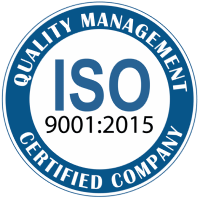Introduction
Aluminum is a versatile and ubiquitous metal, integral to numerous industries due to its unique properties. From its origins in bauxite ore to its widespread use in aerospace, constructionand consumer products, aluminum plays a crucial role in modern life.
Our exploration delves into the:
- Origins of Aluminum
- Extraction Methods
- Production Processes
- Modern Applications and
- Environmental Impact and Sustainability
-
Origins of Aluminum
1.1 Natural Sources of Aluminum
Aluminum is predominantly derived from bauxite, a mineral rich in aluminum oxides. Bauxite forms in tropical and subtropical regions through the weathering of silicate rocks. Major deposits are found in Australia, Guinea, Brazil, and Jamaica, where extensive mining operations exist. The extraction process begins with mining the ore, followed by refining to produce alumina through the Bayer process. This alumina is then electrolyzed to obtain aluminum metal
1.2 History of Aluminum Discovery
Aluminum was first isolated in 1825 by Hans Christian Ørsted, but its widespread use was limited until the Hall-Héroult process made large-scale production feasible in 1886. Early contributions by scientists like Louis-Bernard Guyton de Morveau paved the way for later discoveries. These advancements transformed aluminum from a precious metal to a widely utilized industrial material
1.3 Geological Distribution
Aluminum is primarily found in bauxite ore, with significant deposits located in Australia, Guinea, Brazil, and Jamaica. These regions’ tropical and subtropical climates provide the ideal conditions for bauxite formation, driven by intense weathering and lateritic soil development. Mapping and geological surveys play a critical role in identifying and managing these vital resources
1.4 Early Uses of Aluminum
In ancient civilizations, aluminum compounds such as alum were prized for their dyeing and medicinal properties. Egyptians and Romans used alum extensively, showcasing its early industrial importance. The first notable use of aluminum metal was the 1884 capstone of the Washington Monument, symbolizing the transition from luxury to widespread industrial use following the development of the Hall-Héroult process.
2. Extraction Methods
2.1 Bauxite Mining and Refining
Bauxite is the primary ore for aluminum production. The mining process involves removing the topsoil and extracting bauxite from the ground. The ore is then refined using the Bayer process, where bauxite is dissolved in sodium hydroxide, separating alumina from impurities. The alumina is then precipitated out, filtered, and heated to remove water, producing pure aluminum oxide.
2.2 Electrolysis Process
The Hall-Héroult process is the primary method of aluminum production, involving the electrolysis of alumina. In this process, alumina is dissolved in molten cryolite and subjected to a direct electric current. The electrolytic cell consists of a carbon anode and cathode. During electrolysis, aluminum ions migrate to the cathode, where they are reduced to aluminum metal, while oxygen ions migrate to the anode, forming carbon dioxide.
(Brown, T. L., LeMay, H. E., Bursten, B. E., & Murphy, C. J. (2017). Chemistry: The Central Science (14th ed.). Pearson. doi:10.1039/9781788011694-00393
2.3 Innovations in Extraction Techniques
Innovations in aluminum extraction are revolutionizing the industry with a focus on sustainability and efficiency. New electrolytes and materials are being developed, and renewable energy sources like solar and wind are increasingly used in production plants. Advances in the Bayer process reduce energy consumption, and inert anode technology promises to minimize carbon emissions. These innovations represent significant steps toward more sustainable aluminum production.
3. Production Processes
3.1 Smelting and Casting
The smelting process transforms alumina into molten aluminum through electrolysis in the Hall-Héroult process. This molten aluminum is then cast into various shapes using methods such as sand casting, die casting, and continuous casting. These processes produce aluminum ingots and other forms essential for industrial applications, from construction materials to automotive parts.
3.2 Rolling and Extrusion
Rolling and extrusion are pivotal in shaping aluminum into diverse products. Rolling involves compressing aluminum ingots through rollers to produce sheets, plates, and foils. Extrusion pushes aluminum through a die to form rods, tubes, and profiles. These processes ensure the precise dimensions and properties needed for construction, automotive, and consumer goods industries
3.3 Recycling Aluminum
Recycling aluminum involves collecting, sorting, and melting scrap metal to produce new products, saving up to 95% of the energy compared to primary production. This process supports sustainability by reducing the need for mining and preserving natural resources. Recycled aluminum is used in various industries, including packaging and automotive manufacturing, maintaining the same quality as newly produced metal
3.4 Advances in Production Technology
Advancements in aluminum production technology are driving the industry towards greater efficiency and sustainability. Automation and control systems streamline processes, while new smelting technologies, such as inert anode technology, reduce environmental impact. AI and machine learning optimize operations, improve quality control, and predict maintenance needs, significantly enhancing production efficiency and reducing costs.
4. Applications of Aluminum
4.1 Aluminum in Aerospace
Aluminum is crucial in aerospace due to its high strength-to-weight ratio, corrosion resistance, and durability. Alloys like 2024, 6061, and 7075 are used in aircraft frames and fuselages, enhancing performance and fuel efficiency. This lightweight metal enables the construction of more efficient and durable aircraft, benefiting both commercial and military aviation
4.2 Aluminum in Construction
Aluminum is integral to modern construction due to its strength, durability, and resistance to corrosion. Its applications range from building facades and window frames to roofing and structural components. Notable projects like the Empire State Building and the Sydney Opera House showcase aluminum’s versatility and aesthetic appeal, making it a preferred choice in contemporary architecture
4.3 Aluminum in Consumer Products
Aluminum is integral to consumer products, offering lightweight, durable, and recyclable solutions. It is used extensively in packaging, electronics, and household items due to its versatility. Examples include beverage cans, which are efficient and eco-friendly, and smartphones, where aluminum provides strength and thermal conductivity. Leading brands leverage aluminum to create innovative and sustainable products
4.4 Emerging Uses of Aluminum
Aluminum is pivotal in emerging technologies, particularly in electric vehicles (EVs), where its lightweight properties enhance battery efficiency and performance. In renewable energy, aluminum is used in solar panel frames and wind turbine components due to its durability and corrosion resistance. Advanced manufacturing techniques, like 3D printing, are also leveraging aluminum for its versatility. These applications showcase aluminum’s potential to drive future technological advancements
5. Environmental Impact and Sustainability
5.1 Environmental Impact of Bauxite Mining and Production
Bauxite mining and aluminum production have significant environmental impacts, including deforestation, habitat destruction, and pollution. Mining operations often lead to soil erosion and contamination of water sources, while the energy-intensive nature of aluminum production contributes to greenhouse gas emissions. Efforts to mitigate these impacts include adopting sustainable mining practices, restoring ecosystems, and investing in cleaner technologies
5.2 Energy Consumption in Aluminum Production
Aluminum production is highly energy-intensive, requiring over 14,000 kWh per ton of aluminum. This energy demand contributes to significant greenhouse gas emissions and production costs. The Bayer process and Hall-Héroult electrolysis are particularly energy-consuming. Advances in energy efficiency and the integration of renewable energy sources, such as hydropower, are essential for reducing the environmental impact of aluminum production
5.3 Recycling and Sustainability Practices
Recycling aluminum is highly energy-efficient, requiring only 5% of the energy needed for primary production. This process significantly reduces greenhouse gas emissions and conserves natural resources. Innovations in green technology, such as closed-loop recycling systems, enhance the efficiency of aluminum recycling. Successful programs and initiatives demonstrate the environmental and economic benefits of adopting circular economy principles in the aluminum industry
5.4 Future Trends in Sustainable Aluminum Production
The future of aluminum production is marked by innovations in carbon-free smelting technologies, such as inert anode technology, which eliminates direct greenhouse gas emissions from the smelting process. The integration of renewable energy sources, such as solar and wind power, into aluminum production is another key trend. Advances in recycling technologies and the adoption of circular economy practices are also crucial, ensuring that aluminum remains a sustainable material. Research initiatives like the ELYSIS project aim to commercialize these advancements, driving the industry towards a greener and more efficient future.
Conclusion
Aluminum’s journey from bauxite ore to a vital industrial material is marked by significant technological advancements and sustainable practices. Its high strength-to-weight ratio, durability, and corrosion resistance make it indispensable in aerospace, construction, and consumer goods.
The historical milestones in aluminum discovery and the development of efficient extraction methods like the Bayer and Hall-Héroult processes have paved the way for modern innovations.
The integration of renewable energy sources and the adoption of carbon-free smelting technologies underscore the industry’s commitment to sustainability. Recycling aluminum further enhances its eco-friendly profile, offering substantial energy savings and reducing environmental impact. As the demand for sustainable materials grows, aluminum’s role in emerging technologies such as electric vehicles and renewable energy infrastructure becomes increasingly vital.
This exploration not only highlights aluminum’s current applications but also envisions its future contributions to a greener, more efficient world, demonstrating its enduring importance in advancing both industrial capabilities and environmental conservation.



